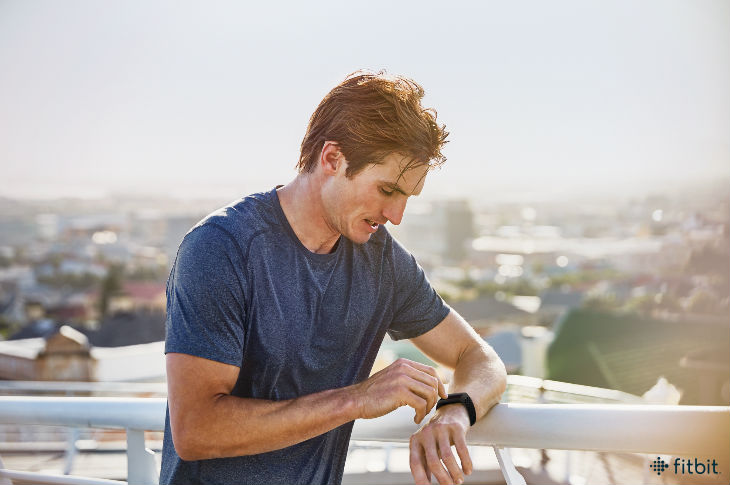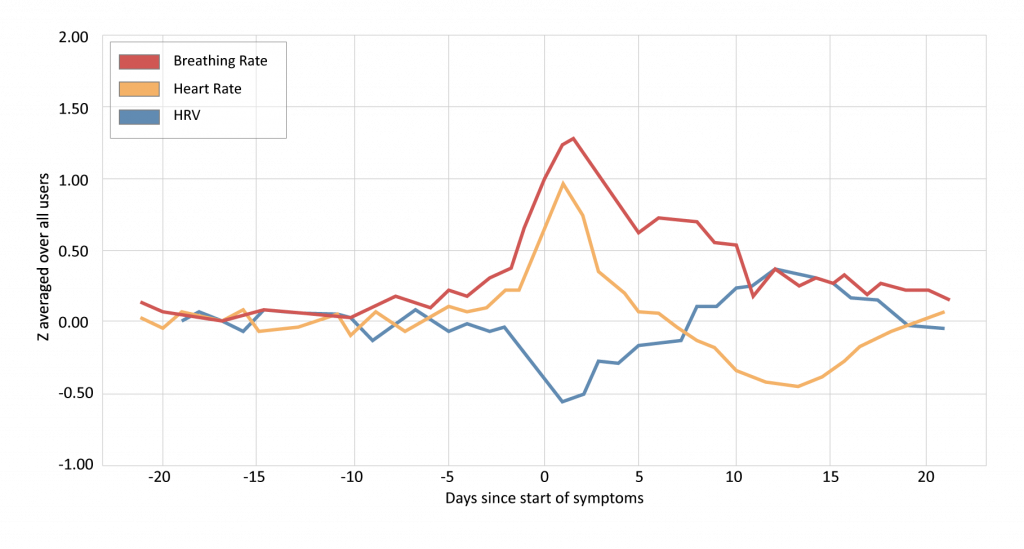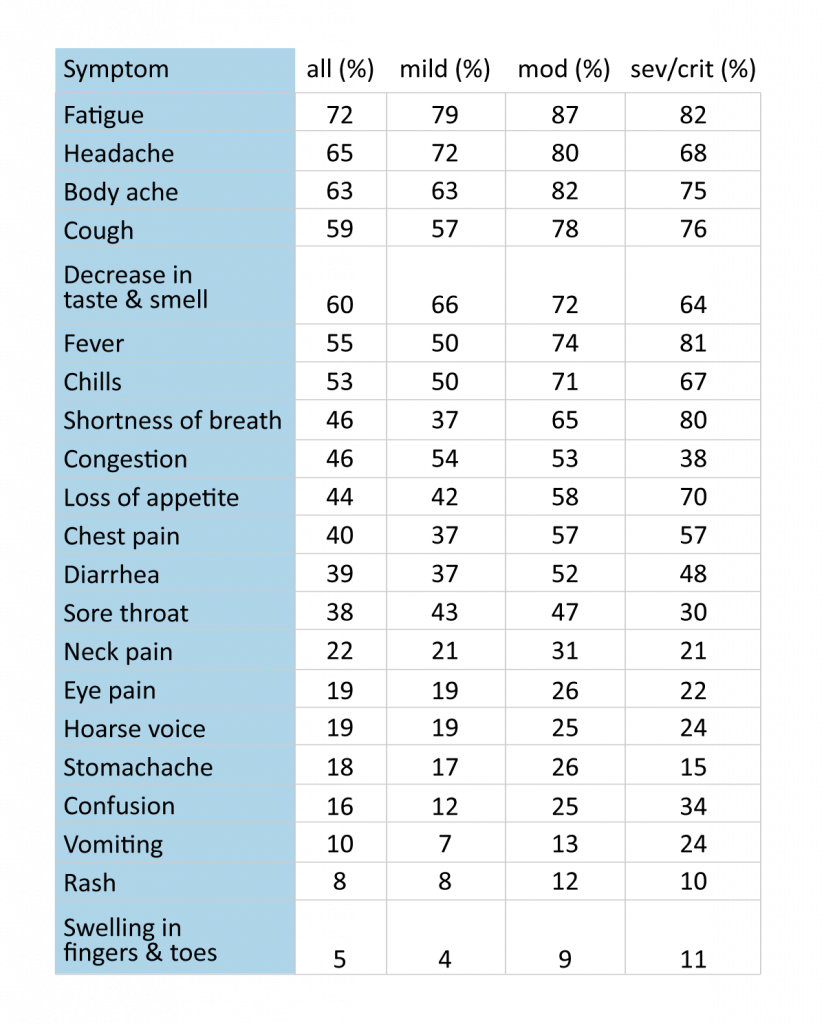
The COVID-19 pandemic has underscored the importance of staying healthy, and our mission to help people live healthier lives has never been more important. Since the start of this global health crisis, the Fitbit research team has been diligently working to help make a difference in the fight against COVID-19. This includes accelerating work on early disease detection, an effort led by our team of data scientists with deep expertise in machine learning and predictive modeling.
In May, we announced the launch of the Fitbit COVID-19 study aimed at building an algorithm that detects COVID-19 before symptoms start. In just over two months, more than 100,000 Fitbit users across the US and Canada have enrolled, with more than 1,000 positive cases of the virus reported. This study presents an exciting opportunity to see how the power of the Fitbit community will help us better understand this new and complex disease. If you’re interested in contributing to this research, you can join here or in the Assessments & Discover tab in the Fitbit app.
Because data to help detect COVID-19 is of critical global importance, we’ve submitted our early research for publication in a peer-reviewed journal. While we work to finalize the publication, we have made the full manuscript publicly available as a preprint, which allows us to share some of the preliminary findings.
Early Findings From Fitbit COVID-19 Study
So far, we’re encouraged to see physiological signs of disease detected by Fitbit devices simultaneously with study participants’ reporting the onset of COVID-19 symptoms, and in some cases even before.
Based on the findings of our study, we can detect nearly 50 percent of COVID-19 cases one day before participants reported the onset of symptoms with 70 percent specificity.
This is important because people can transmit the virus before they realize they have symptoms or when they have no symptoms at all. If we can let people know they should get tested a day before symptoms begin, they can isolate and seek care sooner, helping to reduce the spread of COVID-19.
As researchers, we are always working to find a balance between sensitivity (alerting people who may be sick) and specificity (the ability to identify people who are healthy), as there are trade-offs to both. We will continue to work with the clinical and public health communities to evaluate different models for developing this technology to ensure the optimal balance.
Our study also reinforces that breathing rate, resting heart rate and heart rate variability (HRV) are all useful metrics for indicating onset of illness and are best tracked at night, when the body is at rest. Our research shows that HRV, which is the beat-to-beat variation of the heart, often decreases in people who are exhibiting symptoms of illness, while resting heart rate and breathing rate are often elevated. In some cases, those metrics begin to signal changes nearly a week before participants reported symptoms.
Other findings include:
- On average, heart rate variability hits its lowest point the day after symptoms are reported
- Increases in resting heart rate normalize, on average, at least 5–7 days after the start of symptoms
- Breathing rate peaks typically on day 2 of symptoms, but there is a slight elevation, on average, for up to 3 weeks after symptoms start

Understanding Symptoms and Severity of COVID-19
In addition to detecting early signals of COVID-19, we also are gleaning some insights into common symptoms, as well as severity, duration of illness and the symptoms most likely linked to hospitalization. Many of these observations align with what we’re hearing from other researchers and public health officials. For example, being older, male, or having a high BMI increases the likelihood of severe outcomes.
In addition, our study found that shortness of breath and vomiting are the symptoms most likely to predict that someone with COVID-19 will need to be hospitalized, while sore throat and stomachache were the symptoms least likely to predict the need for hospitalization.
We’re also seeing that the most common symptom reported by individuals with COVID-19 was fatigue, which was present in 72 percent of participants reporting having COVID-19. This was followed by headache (65 percent), body ache (63 percent), decrease in taste and smell (60 percent), and cough (59 percent). Of note, fever was present in just 55 percent of people reporting COVID-19, an indicator that temperature screening alone may not be enough to understand who might be infected.
Mild cases (those who recovered at home on their own) show a median duration of 8 days, while moderate cases (those who recovered at home with help from others) last about a week longer, with a median duration of 15 days. For severe cases (patients who end up requiring hospitalization), the median duration of illness was approximately 24 days. But this duration had a large spread, with several cases lasting longer than two months.

What’s Next for the Fitbit COVID-19 Study
It’s clear that our bodies start to signal impacts from the disease before more noticeable symptoms appear. With these initial signals identified, we’ll continue our work in developing an algorithm to detect diseases like COVID-19 and focus on expanded research in a real-world environment.
Early detection is critical, and we hope to bring this type of information to consumers as soon as possible. As a next step, we’ll continue to work with our research partners like Scripps Research Translational Institute and Stanford Healthcare Innovation Lab to further validate the technology and intend to engage with the appropriate regulators globally to determine the best path to bring this to consumers.
This information is for educational purposes only and is not intended as a substitute for medical diagnosis or treatment. You should not use this information to diagnose or treat a health problem or condition. Always check with your doctor before changing your diet, altering your sleep habits, taking supplements, or starting a new fitness routine.

If you have questions about a Fitbit tracker, product availability, or the status of your order, contact our Support Team or search the Fitbit Community for answers.
Please note: Comments are moderated and may not appear immediately after submission.